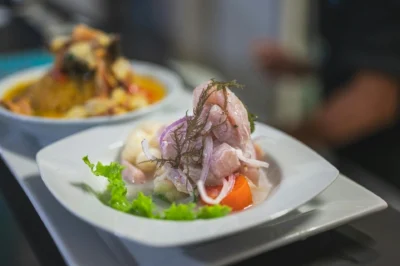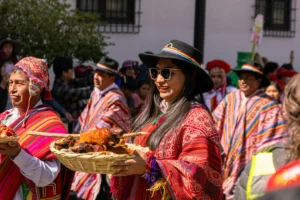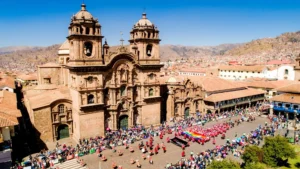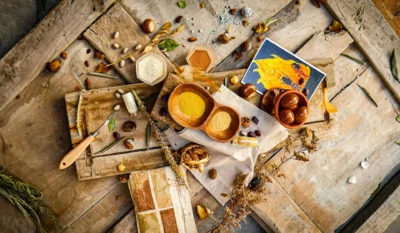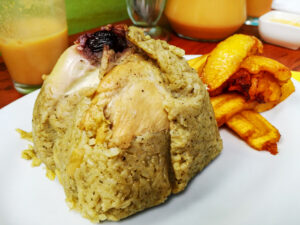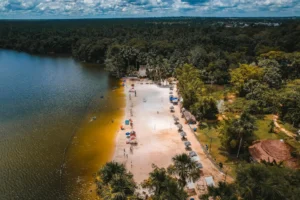The Peruvian highlands are a destination where tradition, culture, and nature come together to offer an exceptional gastronomic experience. Its cuisine, deeply rooted in history and local customs, stands out for the use of native ingredients such as potatoes, quinoa, and guinea pig.
At Machu Picchu Wayna, we will explore the most representative dishes of the Peruvian highlands, their preparation methods, and their cultural significance.
The Importance of Gastronomy in the Peruvian Highlands
The gastronomy of the Peruvian highlands is important both culturally and economically. Its traditional dishes, based on native ingredients such as potatoes, quinoa, guinea pig, and alpaca meat, reflect local history and customs. These foods are not only part of the daily diet but also hold symbolic value in celebrations.
Additionally, Andean cuisine boosts the local economy, especially through agriculture and gastronomic tourism. Thus, the gastronomy of the highlands is a reflection of cultural identity and a key resource for regional development.
Main Dishes
Pachamanca
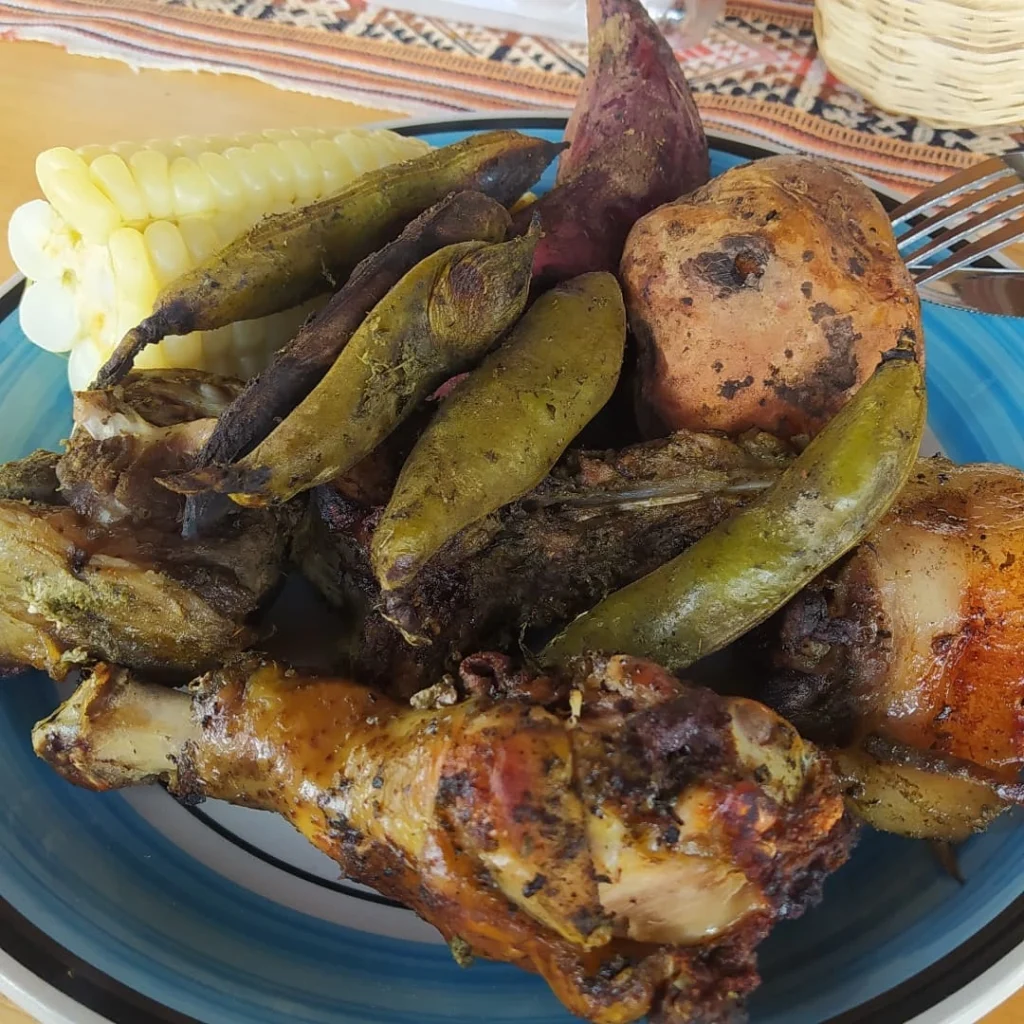
What is Pachamanca?
This dish is considered one of the most representative foods of the Peruvian highlands. It is prepared in a hole in the ground, where hot stones are placed to cook meats such as lamb, pork, chicken, and guinea pig, along with potatoes, corn, fava beans, and other tubers and aromatic herbs. The cooking process gives it a unique, smoky flavor. This dish is traditionally prepared during festivities or family gatherings, symbolizing the communities’ relationship with the land (Pachamama) and nature.
Preparation Process and Cooking Method
Pachamanca is cooked in an improvised oven made of hot stones buried in the ground. The ingredients, seasoned with aromatic herbs such as huacatay, are placed in layers over the stones, covered with leaves and soil, and left to cook slowly, giving it its unique flavor.
Its Cultural and Gastronomic Importance
Pachamanca is more than just a dish; it is a ceremony that brings the community together and symbolizes the connection between humans and the land. It represents gratitude, abundance, and the continuity of traditions.
Cuy Chactado
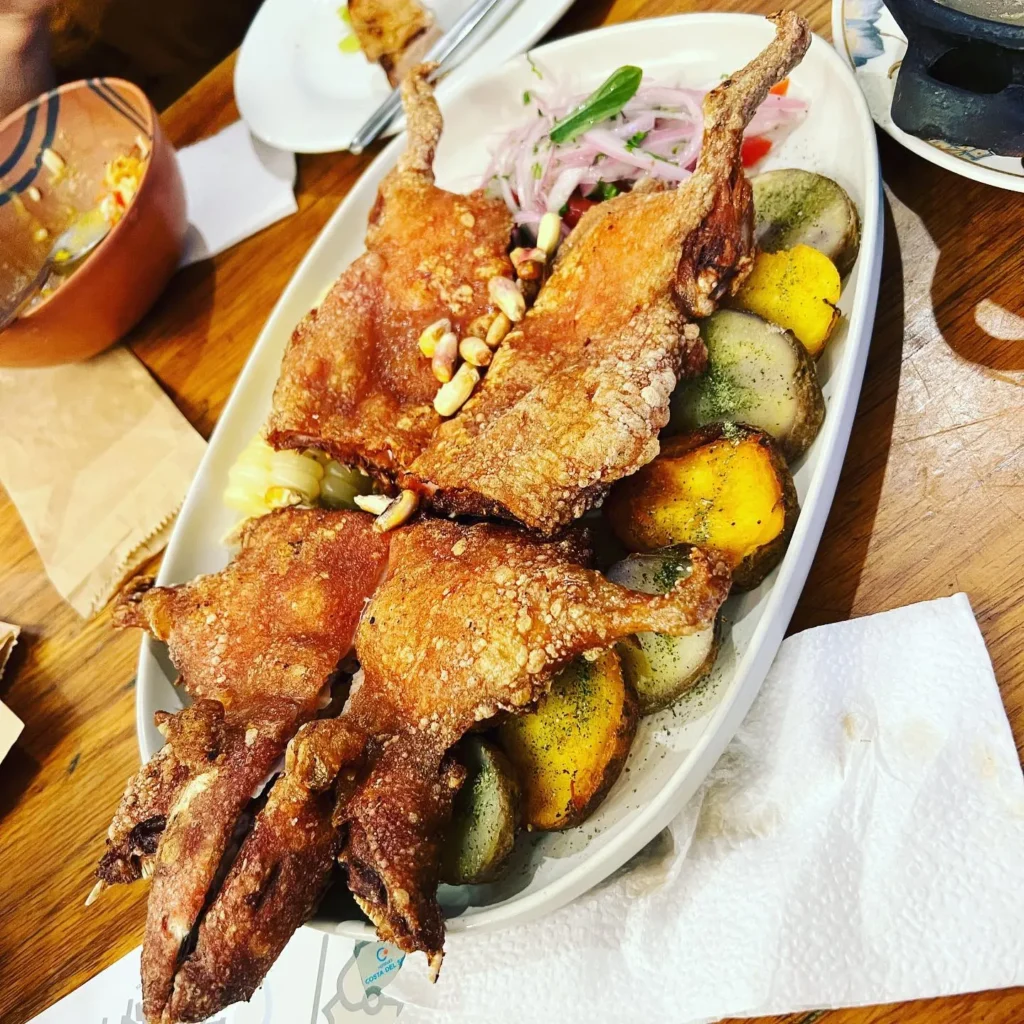
Origin of Cuy Chactado
It originates from ancient Andean civilizations, especially the Incas, who domesticated the guinea pig as a food source and considered it sacred. The dish consists of seasoning and frying the guinea pig until its skin becomes crispy. The “chactado” technique involves flattening it before frying. Although it was already consumed in pre-Inca times, cuy chactado became especially popular in the southern highlands of Peru, being an essential part of festivities and celebrations.
Main Ingredients
- Whole guinea pig (preferably)
- Oil, garlic, cumin, salt, and pepper (for seasoning and frying)
- Lemon or vinegar (for marinating)
- Potatoes and chili sauce (as an optional side)
How It Is Served and Accompanied
It is served with boiled potatoes, corn, and chili sauce. This dish not only satisfies but also surprises with its flavor and texture.
Timpu de Trucha
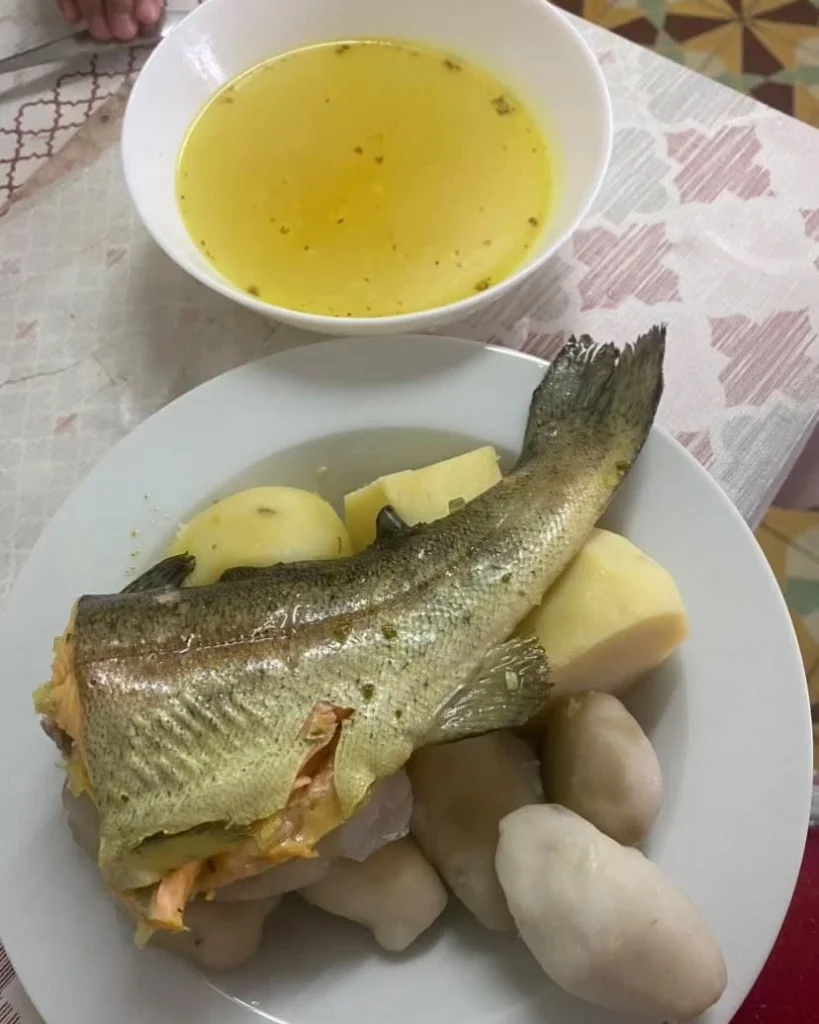
What is Timpu de Trucha?
Timpu de trucha is a traditional dish from the Peruvian highlands, prepared with trout, potatoes, chuño, fava beans, onion, and aromatic herbs. It is slow-cooked, allowing the trout to blend with the flavors of the ingredients. This stew is an example of Andean cuisine, which uses local products and reflects the communities’ connection with nature.
Ingredients and Preparation Method
- Trout (whole or fillets)
- Potatoes, corn (kernels or mote), fava beans
- Onion, garlic, yellow chili (optional), aromatic herbs (huacatay or cilantro)
- Oil or lard, fish broth or water, salt, and pepper to taste
In a pan, heat oil or lard and brown the trout, seasoned with salt, pepper, and garlic. Then, add the onion, aromatic herbs, potatoes, corn, and fava beans, and cover with fish broth or water. Cook over low heat until the potatoes are tender. Finally, add the trout back in and cook for a few more minutes to blend the flavors. Adjust the salt and pepper, and serve hot.
Nutritional Value
Trout is rich in protein and omega-3, making this soup a healthy and comforting option.
Mote or Patasca Broth
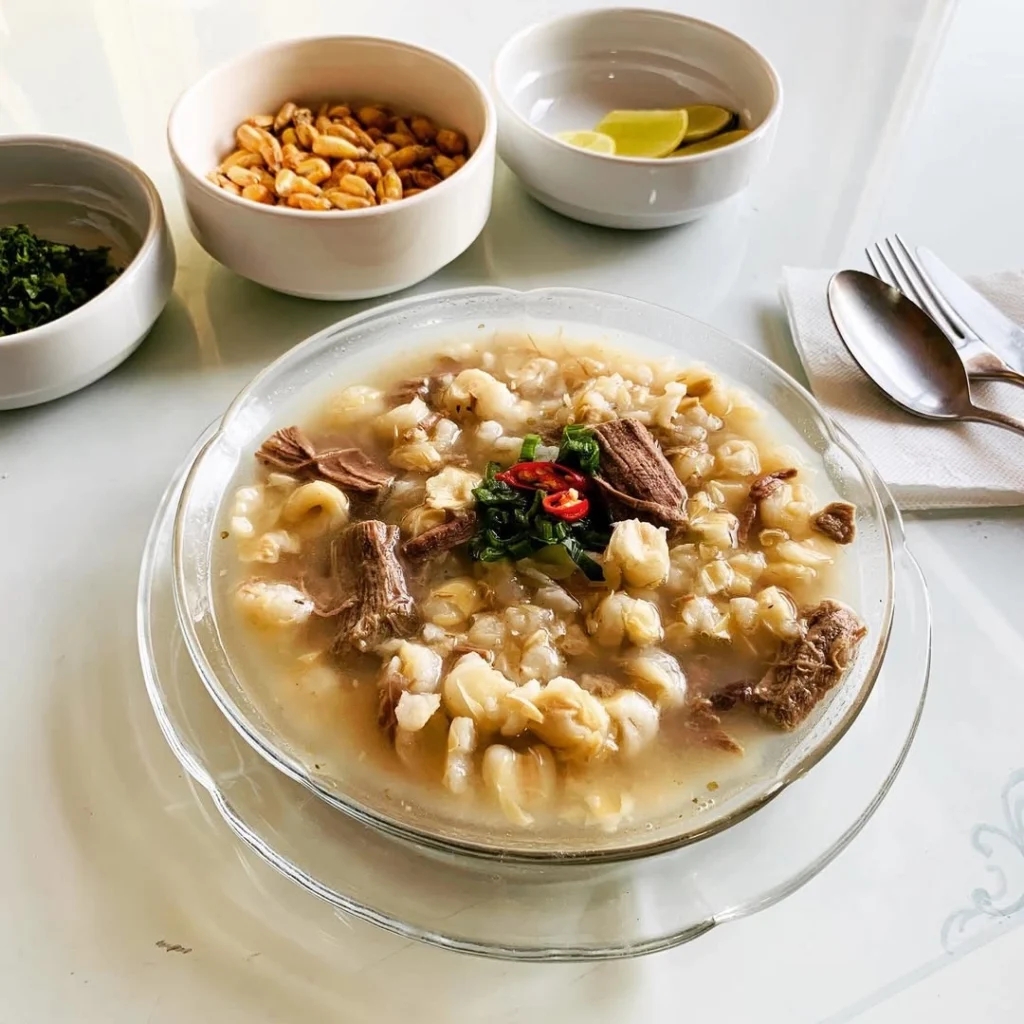
History of Patasca
Patasca originates from pre-Inca Andean cultures, such as the Quechua and Aymara. Its base is mote corn and meat (pork, beef, or lamb), prepared with tubers and vegetables. During the Inca Empire, it was a ritual stew offered to Pachamama and consumed during festivities. Today, patasca remains popular in the Andean region, especially on cold days and during celebrations.
Traditional Ingredients
- Mote corn (shelled and boiled corn)
- Pork, beef, or lamb
- Potatoes and other tubers (such as fava beans or cassava)
- Garlic, onion, cumin, salt, and aromatic herbs (such as huacatay or cilantro)
Occasions When It Is Consumed
It is commonly enjoyed during festivities or after long workdays, especially in cold climates.
Fried Trout
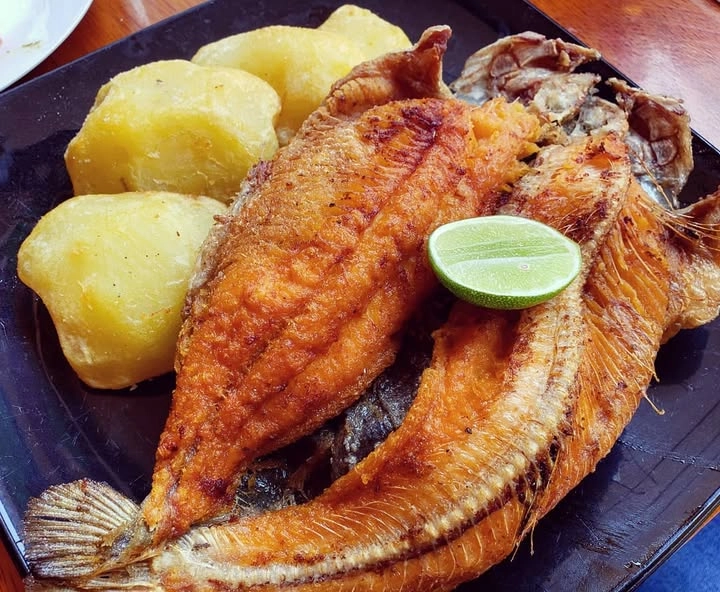
Trout Production in the Peruvian Highlands
Trout production in the Peruvian highlands has grown significantly, especially in regions such as Junín, Cusco, Puno, and Ayacucho, due to ideal cold-water conditions and increasing local and international demand. It began developing in the 20th century and has created jobs in rural areas. Trout has become a key food in the Andean diet and an economic driver, playing a fundamental role in regional gastronomy, as seen in dishes like fried trout.
Preparation of Fried Trout
The trout is seasoned with salt and garlic before being fried in oil until the skin is crispy and the meat is juicy.
Pork Chicharrón
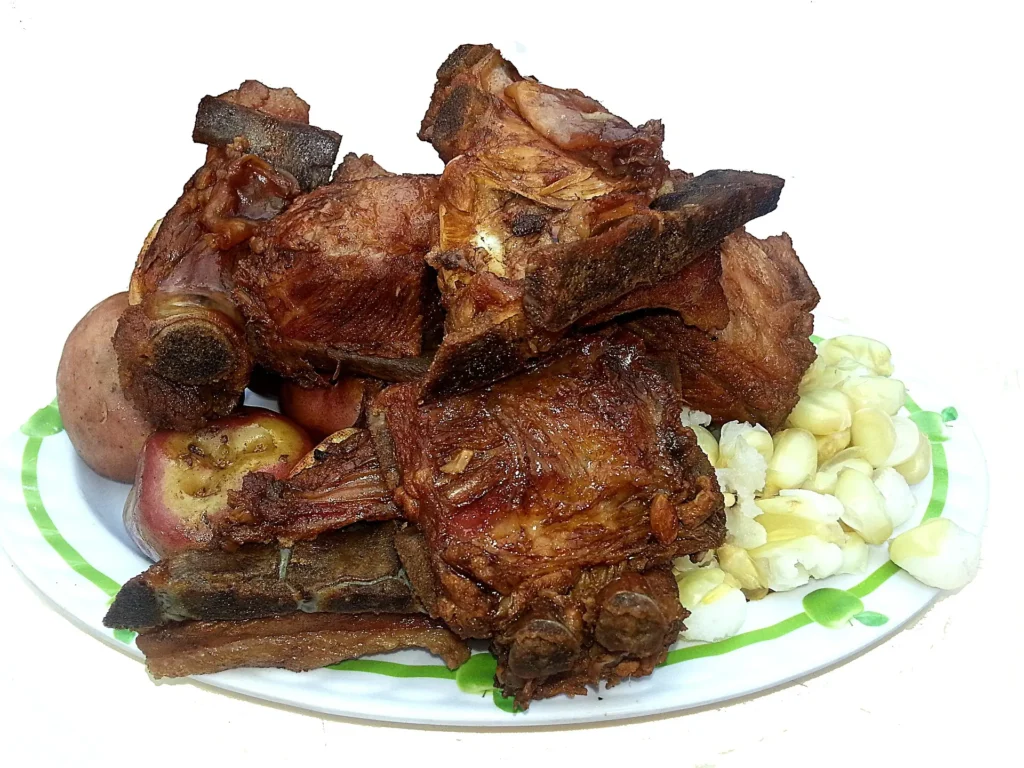
How to Prepare Pork Chicharrón?
The pork is cut into pieces and marinated with garlic, salt, pepper, cumin, and orange juice or vinegar. In a large pan, heat oil and cook the meat over low heat so it releases its natural fat. Then, increase the heat and fry until the pieces are crispy and golden on the outside while remaining juicy on the inside.
Essential Ingredients
- Pork (belly or ribs)
- Garlic, salt, pepper, cumin
- Orange juice or vinegar (optional)
- Oil for frying
Other Notable Dishes
Wheat Soup
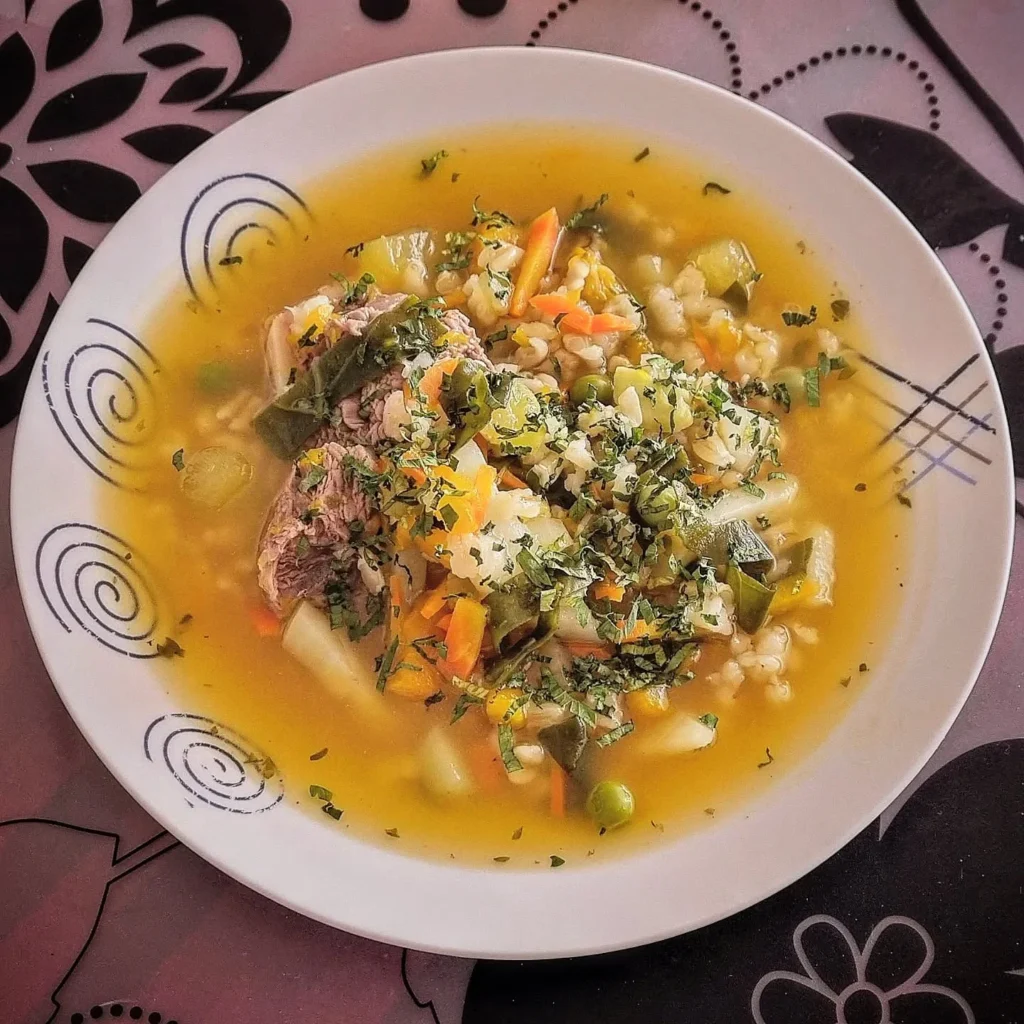
Importance of Wheat in the Andean Diet
It is an important food in the Andean diet, especially in the high-altitude regions of Peru, where it is used in dishes such as soups, bread, and cookies. Wheat provides carbohydrates, fiber, and protein, making it ideal for the physical activities of Andean communities. Its versatility and adaptation to the Andean climate have facilitated its cultivation and consumption, maintaining its relevance in the region’s culinary traditions.
Preparation and Nutritional Benefits
Wheat soup combines wheat grains, vegetables such as carrots, potatoes, fava beans, aromatic herbs, and meat to create a hearty dish. It is rich in fiber, carbohydrates, and protein, making it ideal for the cold Andean climate.
Quinoa Stew
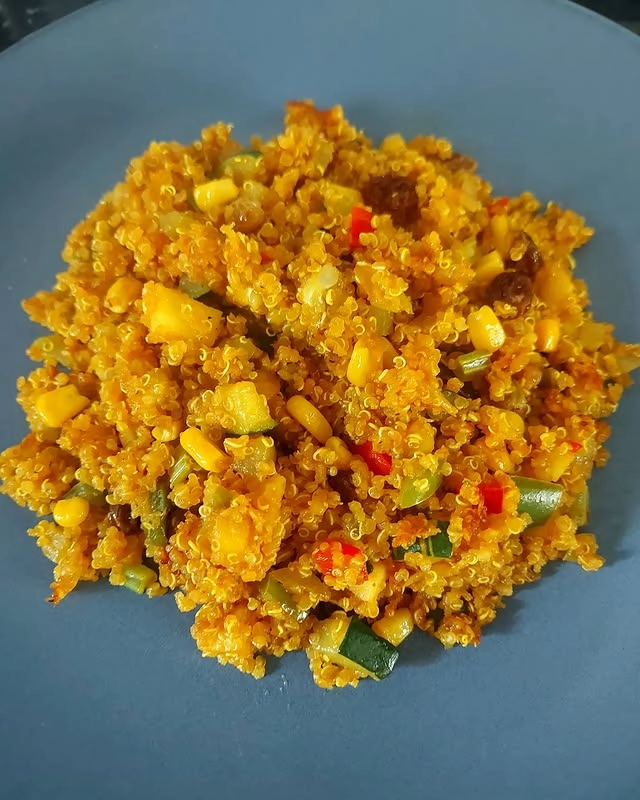
Quinoa as a Superfood
Known as the “golden grain of the Andes,” quinoa is rich in complete proteins, fiber, minerals such as iron and magnesium, and vitamins B and E. It is easy to digest, gluten-free, and low in saturated fats, making it ideal for special diets. Additionally, it is rich in antioxidants, helping to strengthen the immune system. In Andean cuisine, it is used in stews, soups, salads, and desserts and has gained worldwide recognition for its nutritional benefits.
Traditional Recipe for Quinoa Stew
Quinoa stew includes cooked quinoa, vegetables, milk, and local spices such as yellow chili. It is a comforting dish that highlights the versatile flavor of this grain.
Health Benefits
Quinoa is rich in protein, essential amino acids, and antioxidants, making it a perfect food for those seeking a balanced diet.
Olluquito with Charqui
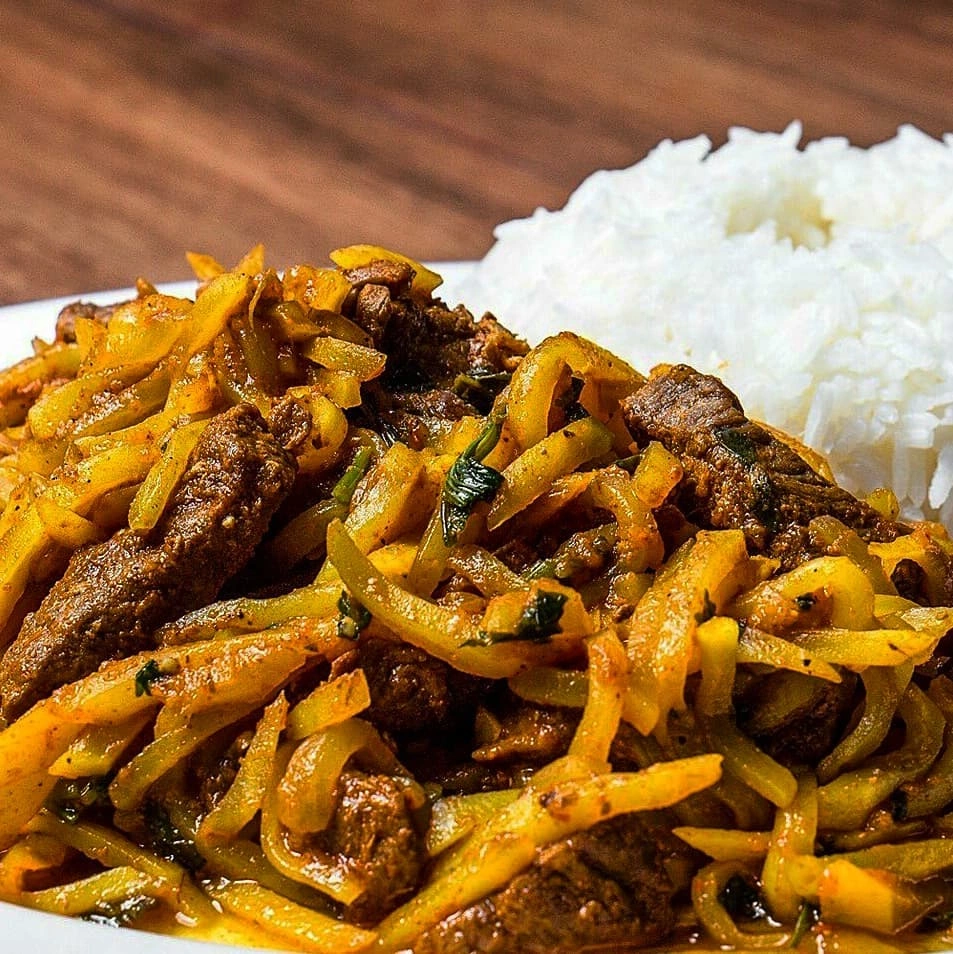
History of Olluquito with Charqui
Olluquito con charqui is a traditional Andean dish with roots in pre-Inca cultures. It combines olluco (a native tuber) and charqui (dried meat, originally from llama or alpaca). Charqui was a meat preservation method used by Andean peoples, while olluco was cultivated in the Andes. This dish was already popular during the Inca Empire and remains one of the most representative recipes of Andean cuisine, especially in Cusco and Puno.
Key Ingredients
- Olluco (Andean tuber)
- Charqui (dried meat, usually beef or pork)
- Onion, garlic, and chili (for seasoning)
- Broth or water (for cooking)
Characteristic Flavors and Textures
The softness of olluco complements the fibrous texture of charqui, creating a unique balance.
Quinoa Mazamorra with Lime
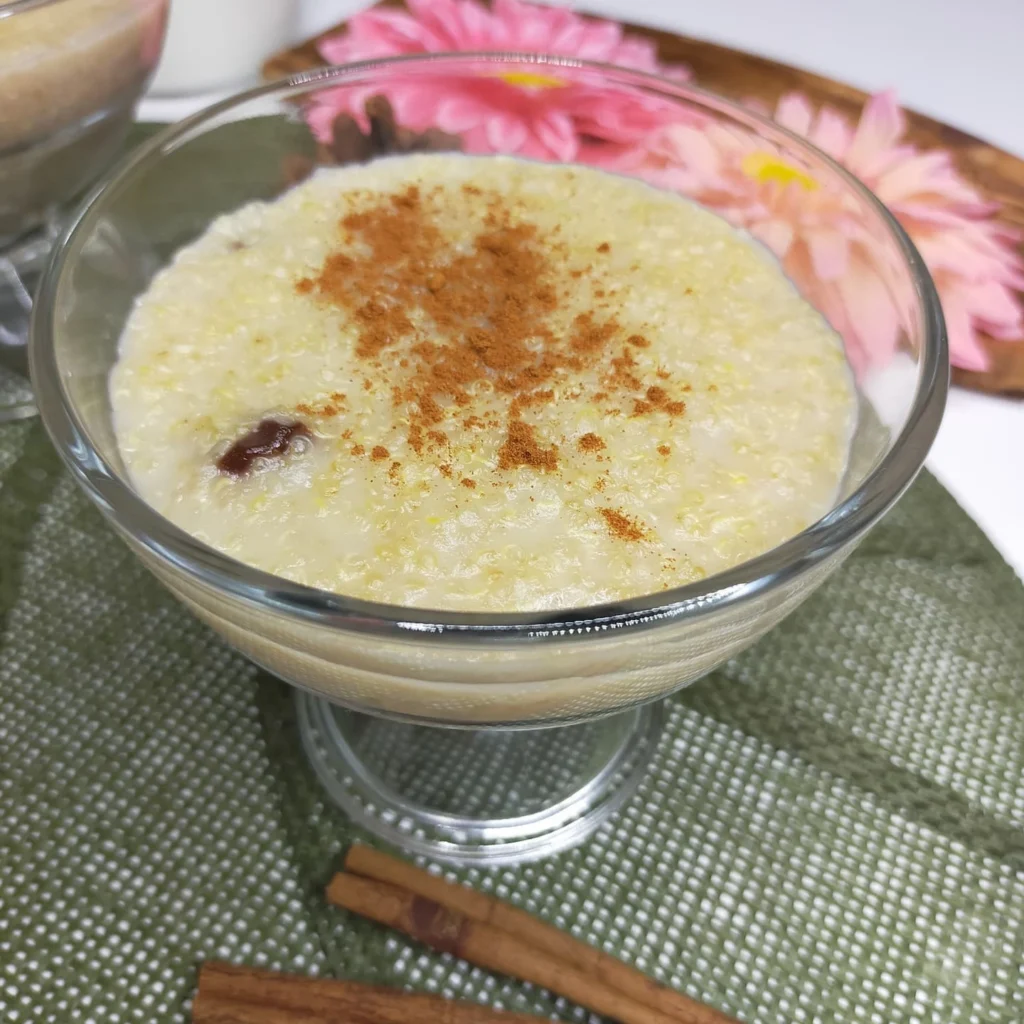
Origin of the Dessert
Quinoa pudding with lime has its roots in Andean cultures, where quinoa has been cultivated since pre-Inca times. In the Andean region, combining quinoa with lime was used to improve the grain’s texture and make the most of available resources. The use of quinoa in desserts, such as pudding, is a local adaptation that has endured over time, becoming a popular choice for festivities and celebrations in the highlands of Peru.
Preparation and Unique Flavor
Quinoa is cooked with milk, cinnamon, cloves, and a touch of chancaca for sweetness. The result is a creamy and aromatic pudding.
Broad Bean Chowder
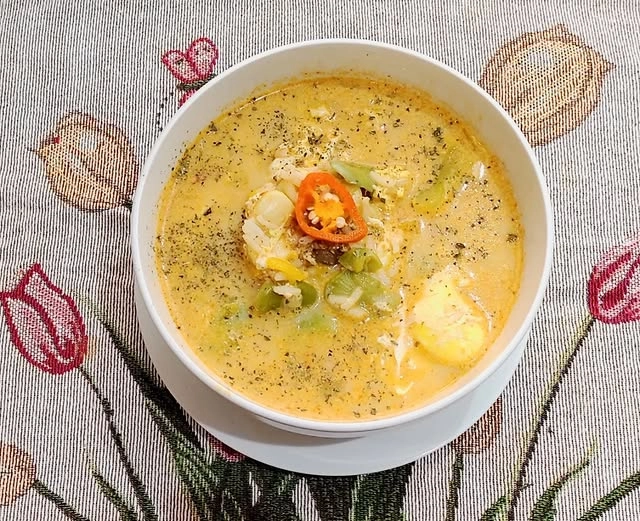
Characteristics of Broad Bean Chowder
Fava bean soup is a traditional dish of Andean cuisine, especially consumed in the cold regions of Peru. It stands out for its use of local ingredients such as fava beans, potatoes, and vegetables, which have been cultivated since pre-Inca times. This dish reflects the tradition of making the most of native products and is a nutritious and comforting food, ideal for the high altitudes of the Andes.
Its main characteristics are:
- Thick and nutritious soup, perfect for cold climates.
- Main ingredient: fava beans, along with vegetables such as potatoes and carrots.
- Broth (chicken or beef) is added, sometimes with milk or cheese for creaminess.
- A complete and comforting dish, rich in protein and minerals.
Essential Ingredients
- Fava beans, potatoes, and carrots
- Broth (chicken or beef)
- Milk or cheese (optional)
- Eggs and fresh herbs (such as huacatay).
Lamb Broth
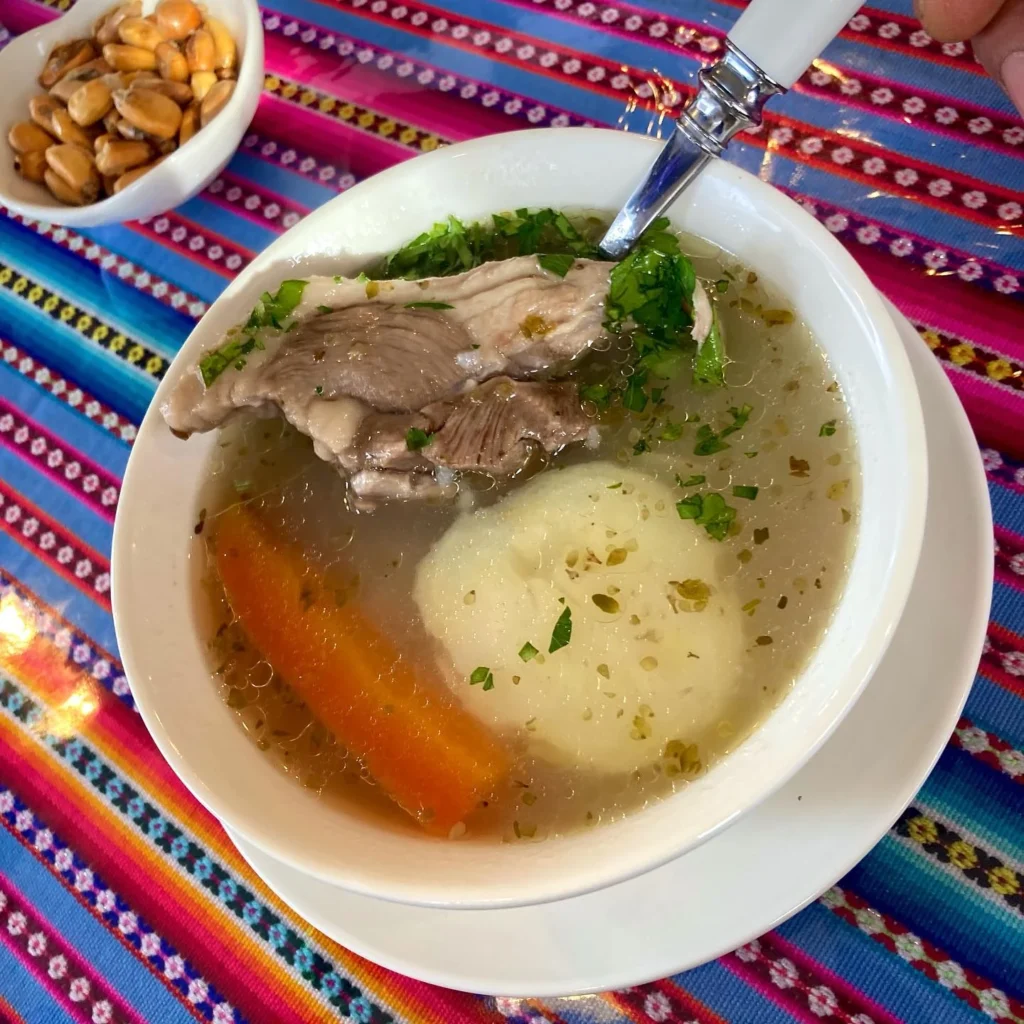
Cultural Significance of Lamb Broth
Lamb broth holds significant cultural meaning in Andean communities of Peru, being associated with celebrations, rituals, and family gatherings. It is a symbol of abundance and unity, prepared to be shared in community events. Lamb, valued for its meat and other uses, reflects sustainability and respect for natural resources. This dish is a legacy of Andean gastronomy, passed down from generation to generation.
How It Is Made
Lamb meat is boiled with potatoes, onions, and local herbs such as huacatay, creating a flavorful broth.
Its Relevance in Festivities
Lamb broth is central to Andean festivities, especially in religious and harvest celebrations. It is prepared in large quantities to be shared within the community, symbolizing abundance, unity, and hospitality, reflecting the importance of food as a social act.
Huatia
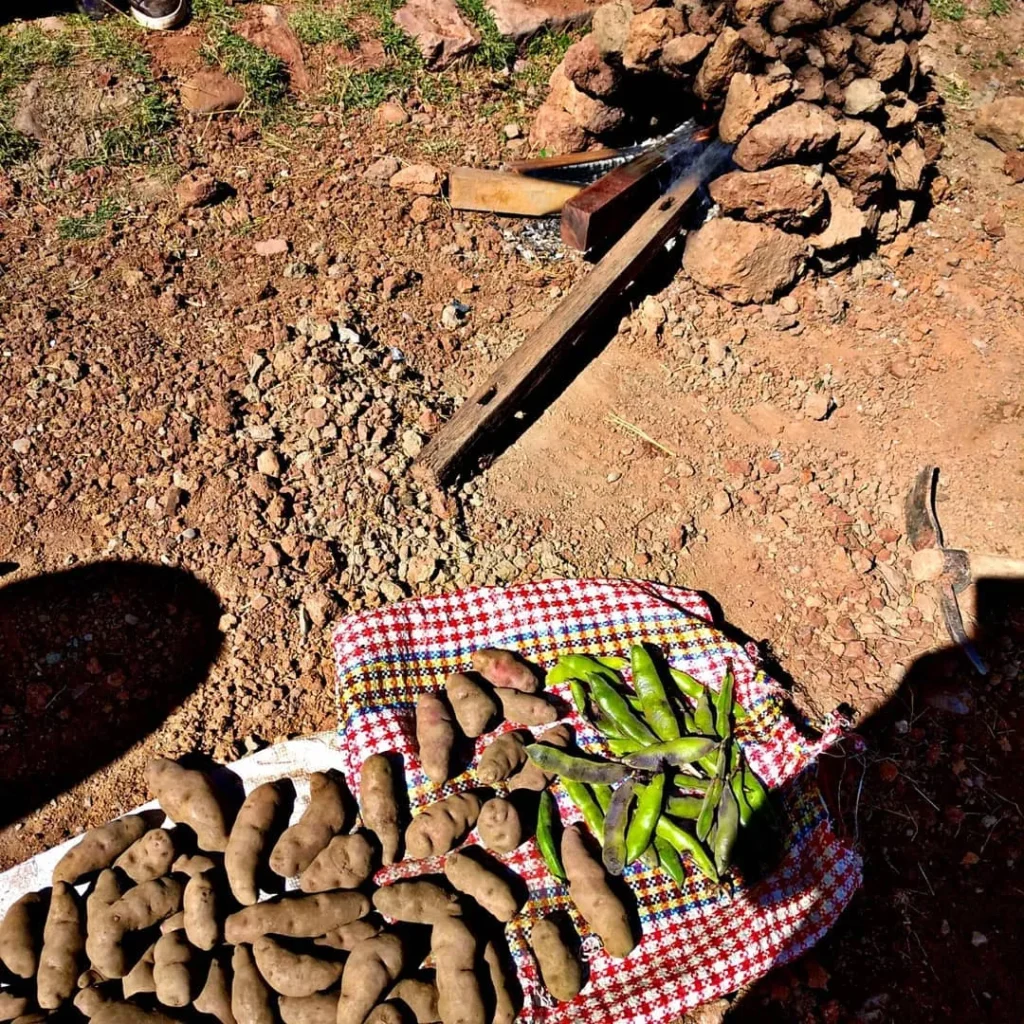
History of Huatia as an Ancestral Technique
Huatia is an ancestral Andean cooking technique that involves burying food in an earthen oven, also known in Quechua as K’urpas. Originating from pre-Incan cultures, it was perfected by the Incas as an efficient cooking method in the cold regions of the Andes. Beyond its culinary function, huatia holds ritual and spiritual significance, being used in celebrations such as the Pachamama festival to honor Mother Earth.
Most Common Ingredients
- Andean potato (a native variety of the region)
- Oca (a typical Andean tuber)
- Haba (a legume common in the Andean diet)
- Camote (sweet potato, another frequent tuber in Andean regions)
This dish is often enjoyed with fresh cheese, ocopa (a herb and chili-based sauce), or cuy, but it can also be served with other meats such as lamb, pork, or chicken, depending on local preferences.
